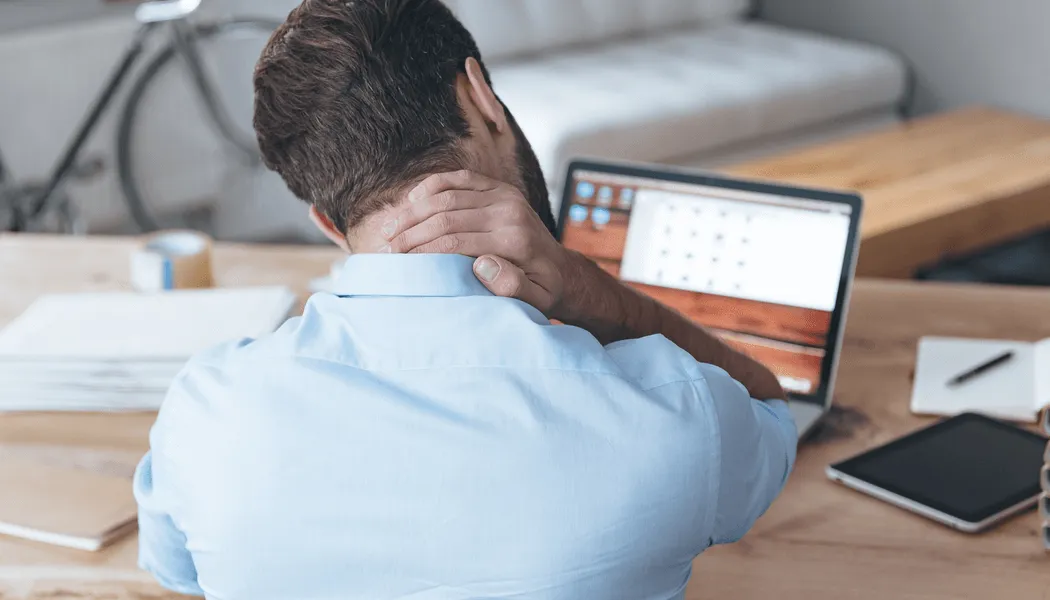Understanding the Agony: What is a Herniated Disc?
Before we dive into the relief, it's crucial to understand the root of the pain. The structure of your spine is a marvel of engineering, but it can be vulnerable. To understand a herniated disc, let’s use a simple analogy.
Imagine your spinal discs are like miniature jelly donuts, positioned between each of your vertebrae. They have a tough, fibrous outer layer (the annulus fibrosus) and a soft, gel-like center (the nucleus pulposus). These discs act as shock absorbers for your spine.
A herniation occurs when a tear develops in the tough outer layer, allowing some of the inner "jelly" to bulge or leak out. The problem isn't the herniation itself, but what it does next. This displaced disc material can press on the highly sensitive spinal nerves that run alongside it. This pressure is the direct source of the pain, numbness, tingling, or weakness you feel, which can radiate down your leg (a condition commonly known as sciatica) or into your arm. Common causes include age-related wear and tear, improper lifting techniques, sudden trauma, or repetitive strain.
What Is Cupping Therapy? A Modern Approach Backed by Physiotherapy
Cupping therapy is a therapeutic technique that uses suction to gently lift the skin, fascia, and muscle layers. Using specially designed cups, negative pressure is created to improve blood flow, release deep muscle tension, reduce inflammation, and promote faster tissue healing. Unlike traditional massage, which applies pressure downward, cupping works in reverse, lifting tissues upward to create space and decompress tight, irritated structures. At Physiotattva, trained physiotherapists use dry cupping, a safe, controlled, and clinically guided method that complements modern back-pain treatment. This makes it especially effective for conditions like herniated discs, where reducing muscle tightness and improving circulation are key to recovery.
The Core Connection: How Does Cupping Therapy Specifically Help a Herniated Disc?
How can placing cups on your back possibly help an issue deep within your spine? The answer lies in the powerful physiological effects of the negative pressure created by cupping. It doesn’t just treat the surface; it creates change in the deeper tissues, directly addressing the key symptoms of a herniated disc.
Decompresses Tissues and Reduces Pressure
The hallmark of cupping is its use of suction to gently lift the skin, fascia (connective tissue), and underlying muscle layers. For a herniated disc, this lifting action is crucial. It creates space in the tight, compressed tissues around the spine, which can help alleviate the direct pressure on pinched nerves and surrounding structures, providing a sense of release.
Boosts Healing Blood Flow
The suction acts like a powerful magnet for your body's natural healing resources. It draws a significant volume of fresh, oxygenated blood to the affected area of your back. This influx of blood is critical for two reasons: it delivers the vital nutrients needed for tissue repair, and it helps to efficiently flush out the inflammatory waste products that accumulate and contribute to pain.
Alleviates Protective Muscle Spasms
Your body’s natural response to a spinal injury is to guard the area by creating severe, painful muscle spasms in the back. While protective, these spasms themselves cause significant pain and stiffness. Cupping is exceptionally effective at releasing this deep-seated muscular tension, breaking the pain-spasm cycle and providing immediate relief that improves your range of motion.
Reduces Inflammation
Pain from a herniated disc is often driven by inflammation around the nerve root. By dramatically improving local circulation and stimulating lymphatic drainage, cupping therapy helps to mechanically clear the pro-inflammatory chemicals from the painful site, directly reducing inflammation, swelling, and the associated pain signals.
The Physiotattva Advantage: Why Cupping is Part of a Bigger Plan
While cupping offers powerful relief, it isn't a standalone magic bullet for a herniated disc. At Physiotattva, we see it as a vital tool within a comprehensive, physiotherapist-led treatment strategy. This integrated approach is what delivers superior and, most importantly, long-lasting results.
Your journey with us always begins with a thorough diagnosis by a qualified physiotherapist. This assessment confirms the herniated disc, pinpoints the source of your pain, and rules out any contraindications for therapy.
We use cupping strategically to "prepare the ground." By reducing acute pain and releasing stiff muscle spasms, cupping makes your body more receptive to the crucial next steps: targeted manual therapy, nerve mobilization techniques, and corrective exercises. While cupping manages the debilitating symptoms, it's the core physiotherapy that addresses the root cause. A personalized exercise program focused on strengthening your core muscles, improving posture, and increasing spinal stability is the key to preventing a recurrence and ensuring your long-term health.
What to Expect During Your Cupping Session in Bangalore & Hyderabad
We understand that trying a new therapy can be daunting. To ease any anxiety, here is a simple walkthrough of what a typical cupping session for back pain looks like at our Physiotattva clinics in Bangalore and Hyderabad.
- Consultation: Your session will start with a quick chat with your physiotherapist to review your current pain levels and symptoms.
- Procedure: You will lie comfortably on a treatment table. Your therapist will then place several cups on specific points on your back, focused around the affected spinal level. You will feel a distinct pulling and tightness as suction is applied, which is normal and typically not painful. The cups are usually left in place for 5-10 minutes.
- Post-Session: The therapist will gently remove the cups. You will notice the signature circular marks on your skin. It is essential to know that these are not bruises. They are a harmless and expected sign of increased blood flow and the clearing of stagnant fluids from the area.
- Aftercare Advice: To maximize the benefits, your therapist will advise you to stay well-hydrated over the next 24 hours. They may also recommend you avoid extreme temperatures, such as very hot showers, hot tubs, or applying ice packs directly to the area for a day.
Is Cupping Therapy Safe for a Herniated Disc?
Addressing safety is our top priority. When performed by a certified and experienced physiotherapist, like the experts on our team at Physiotattva, cupping therapy is a very safe and effective treatment for the symptoms associated with a herniated disc.
However, it is not suitable for everyone. A thorough initial assessment is vital to screen for any contraindications. Cupping therapy is generally avoided for individuals on strong blood-thinning medication, those with active skin infections, open wounds, or sunburn in the treatment area, and during certain stages of pregnancy. Our professional evaluation ensures that cupping is the right and safe choice for you.
Your Path to Long-Term Herniated Disc Relief Begins Here
A herniated disc can feel overwhelming, but you don’t have to let the pain dictate your life. A modern, integrated approach to physiotherapy offers a clear path to recovery. Cupping therapy provides powerful, fast-acting relief from pain and tension, paving the way for targeted physiotherapy that builds long-term strength and stability.
At Physiotattva physiotherapy clinics in Bangalore and Hyderabad, you receive personalised care tailored to your specific needs, ensuring effective results and comfort throughout your journey to recovery.
Don’t wait to start your recovery! Get in touch with Physiotattva for more details! Contact us at +91 89510 47001.



-Physiotherapy.webp)
-for-Shoulder-Pain-Relief.webp)
-for-Knee-Pain-Relief.webp)


-for-Back-Pain-Relief%20(1).webp)





.webp)











.webp)


.webp)





.webp)
.webp)


.webp)
.webp)

.webp)

.webp)

.webp)
.webp)

.webp)


.webp)


.png)








%20(1)-p-3200.jpeg)


.jpg)
.webp)
.webp)
.webp)



